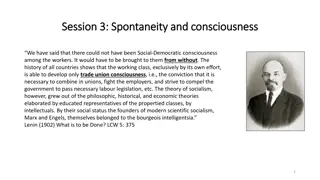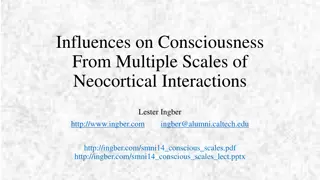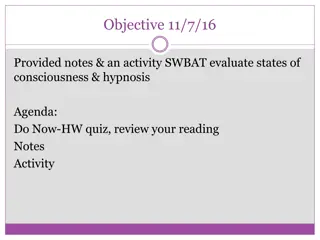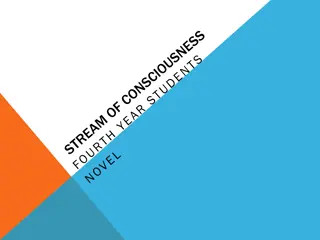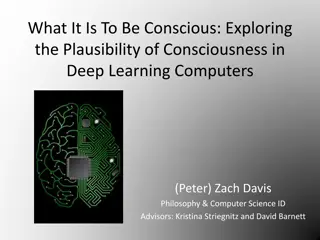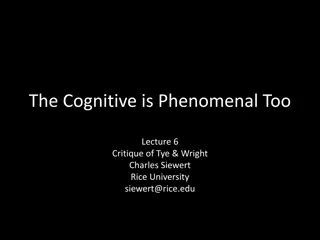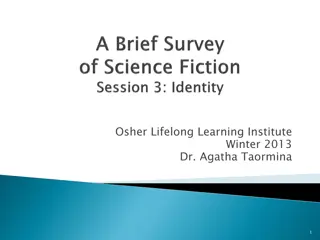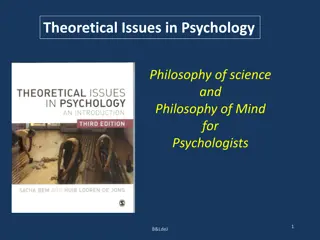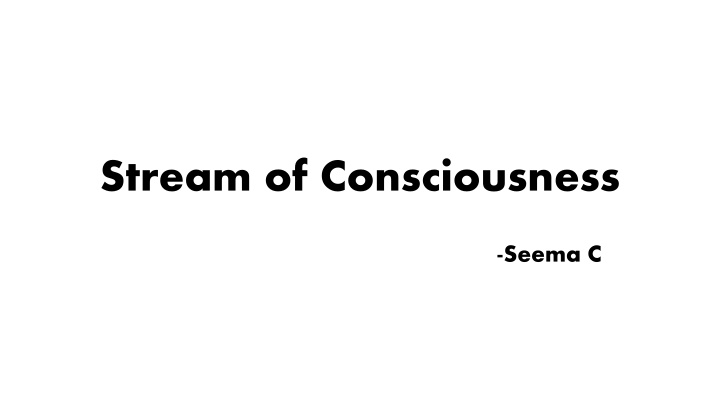
Stream of Consciousness in Literature
Explore the concept of stream of consciousness in literature, a narrative technique depicting the flow of thoughts and emotions of characters through interior monologue. Originating from William James in psychology and gaining prominence in works by authors like James Joyce, Virginia Woolf, and Dorothy Richardson, this style of writing delves into uninterrupted introspection and ungrammatical constructions, leading to groundbreaking novels such as "Ulysses," "Mrs. Dalloway," and "Pilgrimage."
Download Presentation

Please find below an Image/Link to download the presentation.
The content on the website is provided AS IS for your information and personal use only. It may not be sold, licensed, or shared on other websites without obtaining consent from the author. If you encounter any issues during the download, it is possible that the publisher has removed the file from their server.
You are allowed to download the files provided on this website for personal or commercial use, subject to the condition that they are used lawfully. All files are the property of their respective owners.
The content on the website is provided AS IS for your information and personal use only. It may not be sold, licensed, or shared on other websites without obtaining consent from the author.
E N D
Presentation Transcript
Stream of Consciousness -Seema C
Refers to: Flow and ebb of thoughts in our minds
Term first used by- American psychologist William James in his work Principles of Psychology (1890) In literary context, used by- Mary Sinclair while discussing Dorothy Richardson's novels
Characteristics: a literary style in non-dramatic fiction narrative technique that uses interior monologue (in which a character's thoughts, feelings, and reactions are depicted in a continuous flow) Long passages of introspection uninterrupted by objective description unbroken by conventional dialogue uses ungrammatical construction
Examples: Henry James- Portrait of a Lady (1881) [Precursor to the genre] James Joyce- Ulysses (1922), Finnegans Wake (1939) Virginia Woolf- Mrs. Dalloway (1925), To the Lighthouse (1927) etc. Dorothy Richardson- Pilgrimage (1915-38) [First complete stream of consciousness novel to be published] William Faulkner- The Sound and the Fury (1929)











